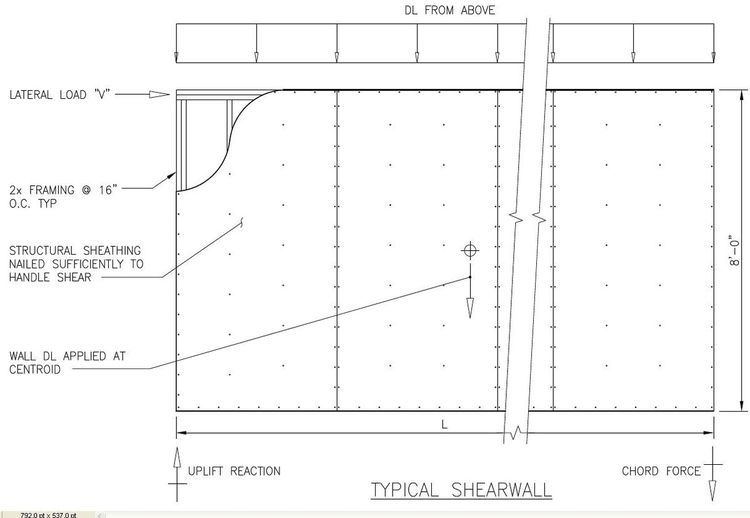 | ||
In structural engineering, a shear wall is a structural system composed of braced panels (also known as shear panels) to counter the effects of lateral load acting on a structure. Wind and seismic loads are the most common loads that shear walls are designed to carry. Under several building codes, including the International Building Code (where it is called a braced wall line) and Uniform Building Code, all exterior wall lines in wood or steel frame construction must be braced. Depending on the size of the building some interior walls must be braced as well.
Contents
A structure of shear walls in the center of a large building—often encasing an elevator shaft or stairwell—form a shear core.
Shear walls resist in-plane loads that are applied along its height. The applied load is generally transferred to the wall by a diaphragm or collector or drag member. They are built in wood, concrete, and CMU (masonry).
Plywood is the conventional material used in shear walls, but with advances in technology and modern building methods, other prefabricated options have made it possible to inject shear assemblies into narrow walls that fall at either side of an opening. Sheet steel and steel-backed shear panels in the place of structural plywood in shear walls has proved to provide stronger seismic resistance.
Nonplanar shear walls
Due to functional requirements, the designer may choose non planar sections like C,L as opposed to the planar sections like rectangular/bar bell sections. Nonplanar sections require 3D analysis and are a research area.
Modeling techniques
Modeling techniques have been progressively updated during the last two decades, moving from linear static to nonlinear dynamic, enabling more realistic representation of global behavior, and different failure modes. Different modeling techniques shear walls span from macro models such as modified beam-column elements, to micro models such as 3D finite element models. An appropriate modeling technique should:
Different models have been developed over time, including macro-models, vertical line element models, finite-element models, and multi-layer models. More recently, fiber-section beam-columns elements have become popular, as they can model most of the global response and failure modes properly, while avoiding sophistications associated with finite element models.
